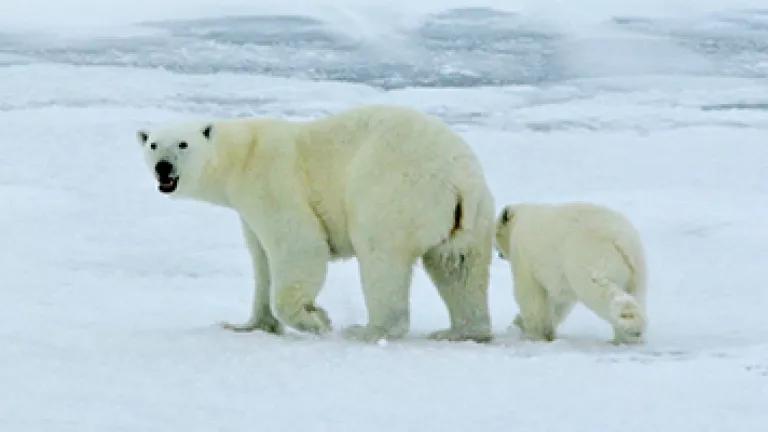On International Polar Bear Day, Will the World Allow the Commercial Trade in Polar Bear Parts to Continue?

Today is International Polar Bear Day and around the world, zoos, educational institutions, and wildlife advocates are celebrating one of the most magnificent animals to still walk our earth. A lot of the focus centers on climate change and rightly so: the rapidly warming Arctic is the single-greatest threat to polar bears. But climate change isn’t the only threat facing polar bears. They are also threatened by unsustainable commercial hunting in Canada, fueled by growing demand for polar bear parts. So this is a particularly important Polar Bear Day, as it also kicks off a meeting of the Convention on International Trade in Endangered Species (CITES), which will decide whether or not that trade continues.
Scientists overwhelmingly agree that polar bears a threatened with extinction from climate change. As the World Wildlife Fund points out:
Based on extremely conservative forecasts about the future extent of the sea ice, scientists have estimated that two thirds of the polar bear population could become extinct by 2050. If the sea ice continues to retreat at the speed witnessed during the last few years, the situation will become even more critical.
But the truth is, while there is much we can do to reduce the climate threat over the long term, over the short term we are already committed to an alarmingly high level of Arctic warming. Even in the best-case scenarios, polar bears are in for a rough road in the coming decades. That’s why scientists are starting to talk about extreme forms of intervention to help save polar bear populations such as artificial feeding and relocations.
While that may be necessary one day, right now there are more concrete things we can do to help polar bears: eliminate the other sources of stress and mortality on polar bear populations. If we can reduce non-climate problems for bears, we will put them in the best position to make it through the unavoidable warming that humanity has caused, while we (hopefully) get our act together and stabilize the climate.
In fact, there are numerous stresses other than climate change that polar bear populations face, such as toxic contamination from globally circulating pollutants such as mercury and industrialization of the Arctic led by oil and gas companies. But the single greatest threat to polar bears beyond climate change is an old-fashioned one: hunting.
Every year Canada places the parts of about 400 polar bears into international trade. In recent years both the numbers of polar bear hides being offered at auction and the price those hide fetch have skyrocketed.

Exploding demand usually leads to increased exploitation, so no one should be surprised that several Canadian Provinces and Territories have ignored scientific advice and drastically increased hunting quotas. In 2011, against scientific recommendations, Nunavut tripled its hunting quota for the Western Hudson Bay population. In Quebec, average harvest for the Southern Hudson Bay population jumped from four bears to seventy in a single year.
Poaching in Russia also continues to be a problem, one that is probably exacerbated by the fact that legal skins are floating around the international market, providing a convenient way to traffic in illegally harvested bears.
There is a solution to this, of course: ban the international commercial trade in polar bear parts. The United States has proposed doing just that by introducing a CITES proposal to list the polar bear as an “Appendix I” species. Numerous countries have said they will support the United States, including the Russian Federation, the United Kingdom, Netherlands, Germany, and Poland. The European Parliament also voted recently to support the United States’ proposal. But Canada is fighting against any international controls on the polar bear trade, despite the fact that 85% of its own citizens support the United States’ position.
On Sunday the world’s wildlife management authorities will convene in Bangkok, Thailand, for the sixteenth meeting of the Convention. A few days later, it will vote and, no matter what happens, affect the fate of thousands of polar bears in the coming years. NRDC will be there, along with our allies, lobbying in support of the United States’ proposal and our team will be updating you along the way.
On this International Polar Bear Day you can do your part too. Go here and take action.




